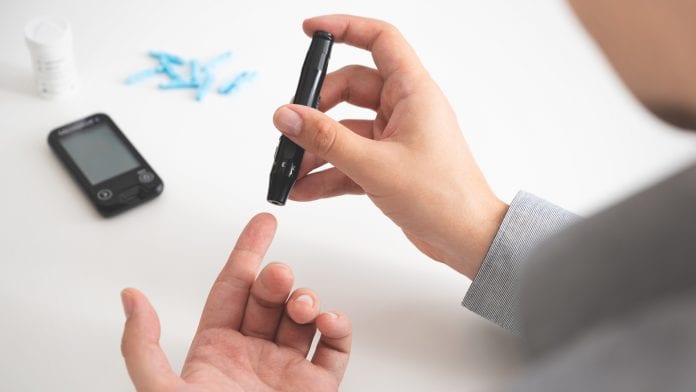
A Type 2 diabetes diagnosis was missed or delayed for around 60,000 UK people in 2020, researchers investigating COVID-19’s impact on the NHS have found.
Researchers at the University of Manchester reviewed the health records of 14 million people in the UK between March and December 2020, to find out how the pandemic has affected the NHS. Initially, they discovered that a Type 2 diabetes diagnosis was missed or delayed for 13,700 people and, once the findings were expanded to the total UK population, this figure increased to 60,000 people.
The research, entitled ‘Impact of COVID-19 on diagnoses, monitoring and mortality in people with Type 2 diabetes in the UK’, has been published in The Lancet Diabetes Endocrinology.
Missed diagnoses
Researchers found that, in April 2020 alone, there was a drop of 70% in recorded diagnoses of the condition compared to expected rates based on 10-year trends in 23 million people. Also in April, rates of diabetes monitoring (HbA1c blood tests) in people with Type 2 diabetes was reduced by 77% in England, with an 84% reduction across Northern Ireland, Scotland, and Wales.
Dr Matthew Carr from The University of Manchester, and lead for this study at the GM PSTRC, said: “Outcomes significantly improve for patients when Type 2 diabetes is diagnosed early and regularly monitored. When the condition goes unchecked, complications can develop which can be more complex to treat. Prior to the pandemic, diagnosis and monitoring relied upon face-to-face contact so it is no surprise to see an initial reduction, as it just wasn’t possible for patients to receive the necessary level of monitoring. However, to see such a significant drop over the course of nine months is concerning and is an indication of the challenges faced by healthcare services during the pandemic.”
The results of the study also showed a significant reduction in the prescribing of the two drugs commonly used to manage the condition, insulin, and metformin. The rates of diagnosing and monitoring were particularly evident in older people, in men, and in those from deprived areas.
Mortality rate increases
The research also looked at mortality rates for people with Type 2 diabetes during April 2020 and reported a 110% increase in England. Mortality rate increases were less elevated in Northern Ireland, Scotland, and Wales (increase 66%).
Nikki Joule, Policy Manager at Diabetes UK, said: “It’s incredibly concerning that rates of Type 2 diabetes diagnoses in the UK were much lower than previous years during the first part of the COVID-19 pandemic. While figures showed a gradual increase in diagnoses from May to December 2020, they remained well below expected levels.
“These results point towards reduced engagement with healthcare during the pandemic, and highlight the urgent need to ensure that those previously identified by their GP as being at high risk of developing Type 2 diabetes receive their annual review. Doing so will ensure that, as appropriate, individuals will receive either a diagnosis, or a referral to the NHS England National Type 2 Diabetes Prevention Programme, or its equivalent.
“Early diagnosis of Type 2 diabetes is vital in reducing the risk of serious diabetes-related complications, such as problems with the heart, kidneys, and eyes.”






















